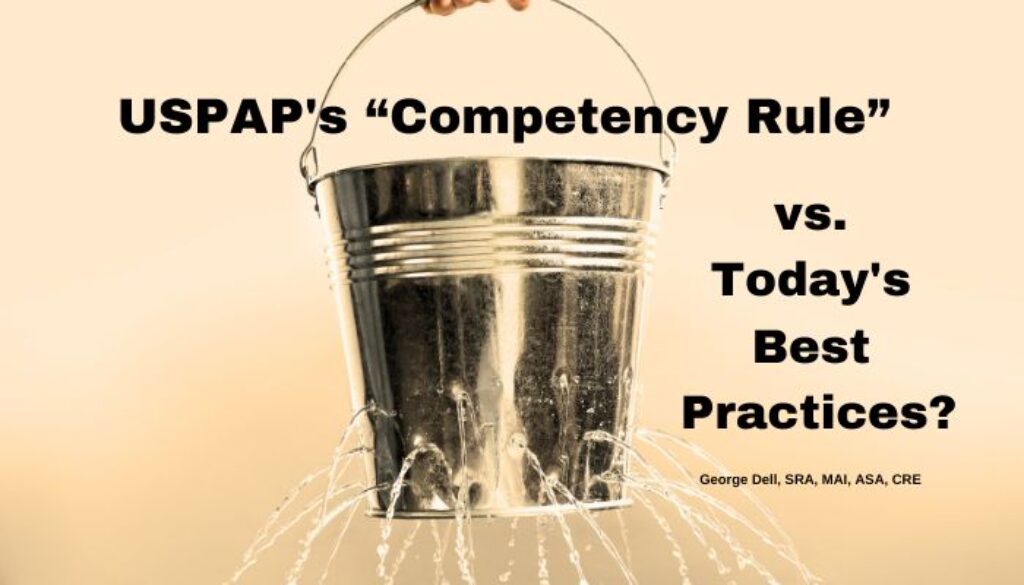The USPAP “Competency Rule” is straightforward. It says you must be competent! For any given assignment, “being competent” requires the appraiser to:
- “properly” identify the problem;
- have knowledge and experience to be competent;
- recognize and comply with applicable laws and regulations.
Editor’s Note: This is Standards, part 3.9 of George Dell’s series on How Do I Move to EBV? Links to the earlier posts are here.
The above three requirements are subjective themselves. What is “properly”? What is sufficient knowledge and experience? Who is to judge these things? Today’s best practices are more practical.
Such competence can be detailed to: property type, market, geography, intended use, laws/regulations, or analytical method. [emphasis added]
The Rule goes on to require disclosure of any incompetence. Said incompetence may be overcome by taking steps to complete the assignment competently; and by reporting the said lack of competence.
The combination of the data science approach and the UVS© (Universal Valuation Standards)[1] dramatically reduces the subjective judgment explicit in the requirements above.
The data science approach feasts off today’s big and little data, instantly available. It also exploits today’s computer power — in visualization, logic, data analysis, and presentation.
The Universal Valuation Standards focus on the defined fundamentals of the process: Problem definition, Data Selection, Predictive algorithm, and integrated data-stream dashboard delivery. Best Practices integrate the methods and principles of the science of data analysis: Data Science. Best Practices comprise similarities to legacy appraisal practice, while deleting subjective bias-vulnerable “making adjustments” and “picking comps.”:
- Problem definition is similar, although more quantitatively objective;
- Data is a five-dimensional reduction to Optimal Information Frame (OIF);
- Prediction algorithms (like adjustments) are contrasting, association, and sequencing;
- Delivery comprises a fully accessible workfile, dashboard options, and reliability measures.
As a result, the Universal Standards focus on principles, leaving the theory to best practices for individual regulatory requirements or user preferences. Nevertheless, they are science-universal, and apply to appraisals, AVMs, evaluations, drive-bys, “value-acceptances”, BPOs, hybrids, bifurcations, and waivers. (The process is identical. What changes is who does it and when do they do it, and how well).
Best Practices derive from the science of data. These comprise computation, complete data, and asset-economics. Econometrics (the measurement of economic things) in turn combines mathematics, probability, and field-related expert judgment (the appraiser).
In the data science approach — analyses, logic, and outcome goals are well-defined. This clarity enables a reliability/risk score, which in turn enables reproducibility, auditability, risk measurement, fundamental value, and forecasting – all of great usefulness to users, and beneficial to the public trust.
Going forward, “competency” will be measured by structured algorithmic modeling expertise, not vague and subjective use of words such as “properly,” “have experience,” and “comply with.”
Modern best practices obviate much current confusion and over-regulation. The future is today.
[1] UVS is currently in draft form of the Community of Asset Analysts© (CAA)
